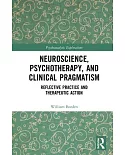What if you could only recognize people by voice, the color of a hat, body posture, or the place and time in which you typically see them? For prosopagnosics, who comprise up to 2 percent of
the general population, there are difficulties distinguishing between one face and the next. Therefore, prosopagnosics need to use non-facial strategies for recognizing the people in their
lives, including those closest to them.
Some prosopagnosics thrive extremely well socially, while others need support. Understanding Facial Recognition Difficulties in Children discusses the challenges of children with prosopagnosia,
some (but certainly not all) of whom are on the autistic spectrum, and explores ways in which teachers, parents, care givers, and child care professionals can generally bolster opportunities
for social understanding by including the prosopagnosic child more fully in school, family, and community events.





















